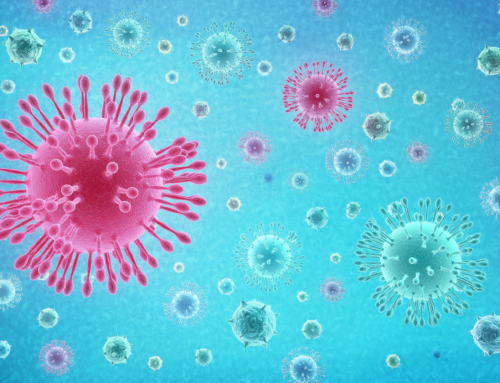
How to Kick Keto Fatigue
What’s known as the “Keto Diet” is defined as a low carb, high fat (LCHF) diet. Similar diets include Atkins and Paleo. Shifting your eating style to keto means that you are eating mostly healthy fats, protein and a small amount of healthy carbohydrates (usually vegetables). The average person consumes a high amount of low quality (sugar and breads) carbohydrates, proteins and fats.
Here is what these ratios typically look like:
Keto calorie content ratio: 15% carbs | 20% protein | 75% fat
Typical calorie content ratio: 65% carbs | 20% protein | 15% fat
Your body will have to shift from running on easily available glucose from high carb food sources to fueling your body with ketosis which is the of converting your fat into fuel. While your body shifts into getting fuel this way your body has to do extra work which can leave you feeling tired. Once the body adjusts to producing fuel in a new way however, the fatigue will go away. This shift takes anywhere from several days to several weeks.
During the transition time you may experience the following fatigue symptoms;
Symptoms of keto fatigue;
- tired
- exhausted
- crash after a workout
- brain fog
- weak
- constipated
- headaches
- flu like symptoms
Knowing it will most likely take a week to shift will hopefully help you stay on the keto track if your goal is to burn fat. Here are some ways to speed up the transition from getting fuel from glucose to getting fuel from fat;
Fill up on Fat
Healthy fats such as coconut oil, palm oil, non-cooked olive oil and fish oil are all very good for your body. Eating enough healthy fats is very important to provide your body with the material it needs to convert that fat into fuel and not go into a survival mode that reduces your metabolism. Check your daily food intake and make sure you are eating 60% to 80% fat. Look for foods that are high in healthy fat such as avocados, nuts and salmon. You can also enjoy fatty meats, cream in your coffee and mayo on a lettuce wrap.
Stick to Healthy Carbs – They Don’t Stick
Healthy carbs include nutrient dense vegetables such as green veggies like spinach, kale, broccoli and also choices such as cabbage and celery. Avoid high carb, low quality vegetables such as potatoes. Most people think of bread, pasta and rice when they think carbs. On the keto diet carbs have to be mostly high quality vegetables.
Carb Training
Expect to spend some time tracking your food, weighing and measuring amounts and learning how to nail your carb limit daily which should be somewhere around 20-30 grams a day. If you go over your carb limit, even with eating too much protein, then your body will not be able to switch to fat burning for fuel and will stay in the glucose zone which will prolong your fatigue because your glucose levels will be too low. Your energy levels won’t rise until your body makes the switch from burning glucose from food to keto which is converting your fat into fuel.
Going on a LCHF diet cannot be a short term temporary attempt at losing fat. You really need to commit to it for a longer period of at least a month or more. Remember, your body will take at least a week to make the switch so you won’t see results until the end of the second week. After that you will want to continue burning fat at a healthy steady rate until you obtain and maintain your goal. If you stick to the keto diet long enough you will get consistent results week over week.
Don’t assume you already know the carb, protein and fat content in the foods you eat. Download an app to help train yourself on exactly what you are eating in a day. You will be surprised by what you learn. There are so many foods that you think are healthy but that may actually be keeping you from even entering into ketosis. Some examples are salad dressings and condiments. These are loaded with sugar and even small amounts will prevent your body from making the fuel switch.
Exercise Strategy
If you are fatigued at the beginning phase of ketosis then you will have to allow some extra recovery after exercise. Expect to take a short nap after a heavy workout or go lighter on your work out. You can load up on an energy booster to help maintain your workout intensity. Post work out you can expect to get some help with energy from supplements, vitamins and metabolism boosters such as ginger and cayenne. These will help you get through the initial fatigue phase while maintaining your regular workout routine.
Fuel Up
Especially if you are active make sure you are eating enough throughout the day. Don’t forget to pack yourself lots of healthy snacks to help keep your energy level up. If you forget you may find yourself out scrambling to find something to eat that is healthy while you feel like your starving. This may push you to pound some low quality carbs and derail the progress you have made. Work at making yourself lots of zip lock snacks that are ready to go in your frig to grab and go with. Some examples that are super quick and easy include the following
turkey with cheese
chicken strips
avocado with a spoon
boiled eggs and mayo
tuna, mayo, celery
cheese sticks
nuts
H2O
Don’t forget to load up on your water intake. Because your body is burning through fat that has been on your body for most likely quiet some time, there can be extra toxins embedded into that fat that are also being removed from your body. These toxins can tax your body as they are being cleaned out. Drinking water helps this process in a big way. Drinking plenty of water will also help clear out any fog or fatigue you are feeling.
These tips should help you kick the keto fatigue you may experience and get you into a solid state of fat burning. Once that happens, the fatigue should melt away right along with your fat for as long as you maintain the keto state.



